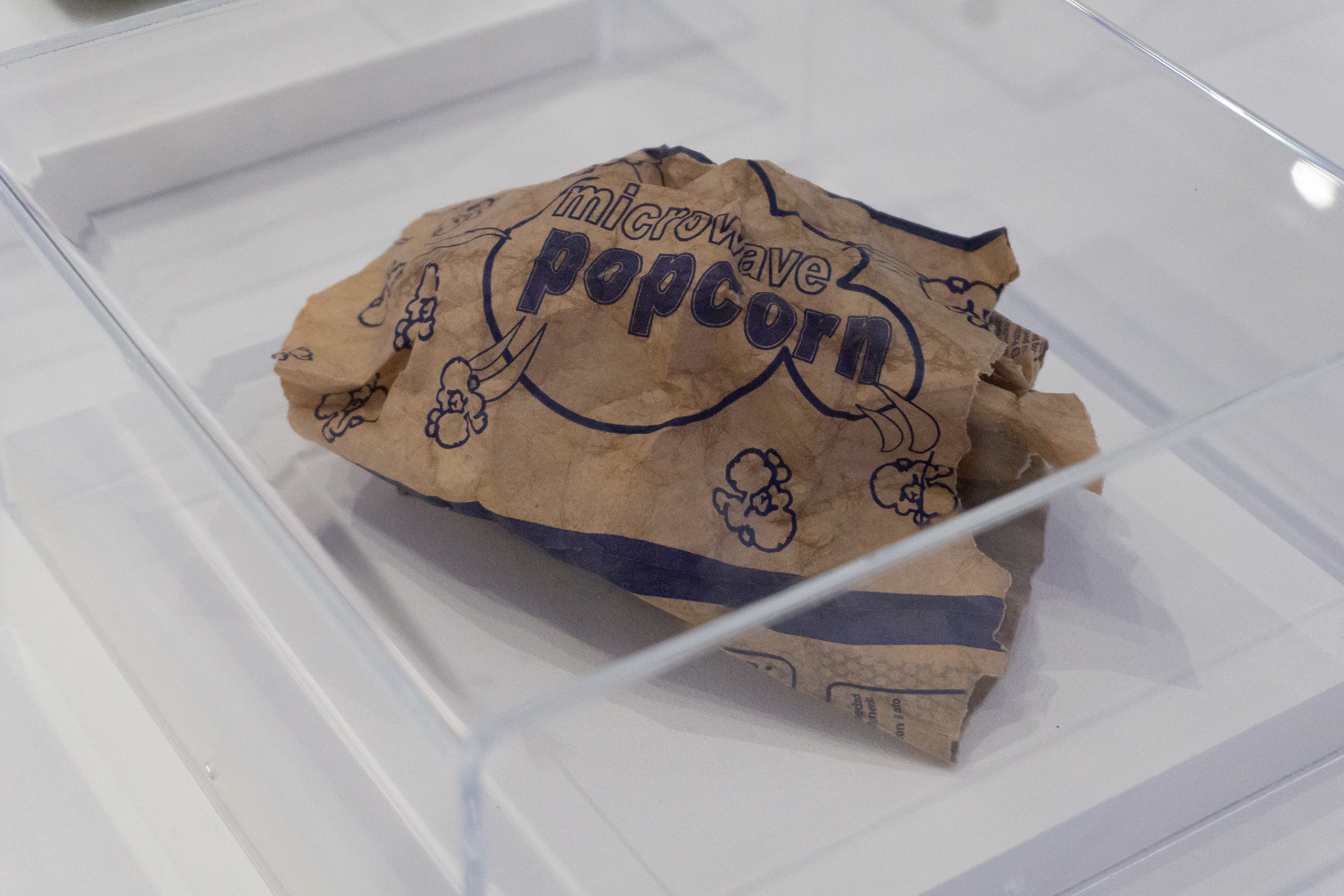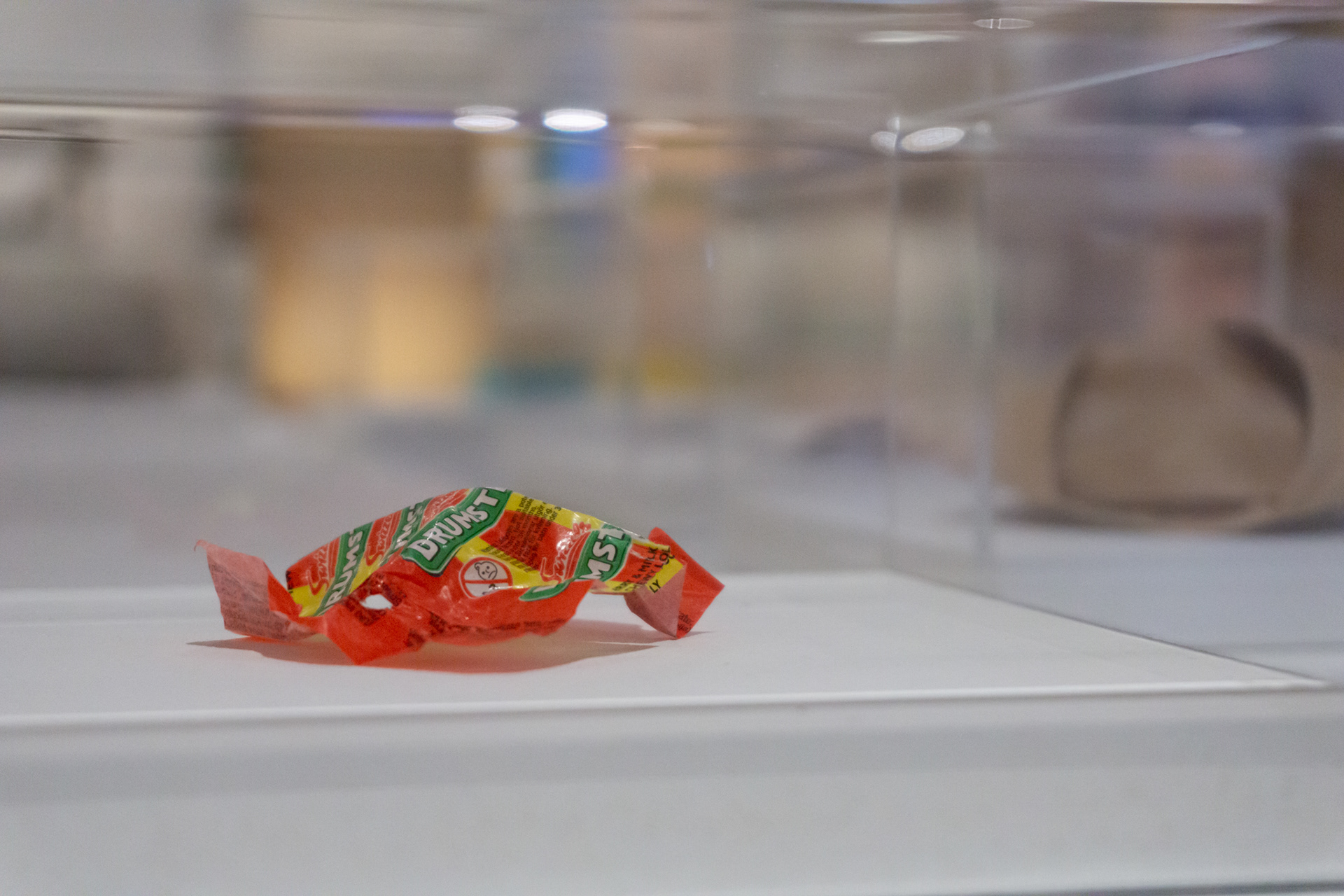Fluorine is the 13th most abundant element in the Earth’s crust, a highly reactive element which forms strong bonds with others. Today, fluorine is in use across the world in many different forms with a vast variety of applications including in pharmaceuticals and agrochemicals, but also in industrial use, firefighting, electronics, healthcare, automotive, and wearables. While fluoropolymers (or fluorinated plastics) have extremely useful properties such as durability, low friction and high resistance to water, oil, acid, and fire, these same qualities are also the reasons why they do not degrade fully for a very long time and persist in nature. That’s why they are sometimes also known as “forever chemicals”.
“Traces of Fluorine” is an installation, which depicts an archive of fluorinated plastics. the archive is a collection of remnant parts of objects found all around different urban environments. At the center of the platform, a collection of fluorite minerals serves as a contrast: displaying fluorine as it is found in nature.



The exhibit also highlights the current chemical production process for fluoropolymers, which is a difficult and toxic process, and juxtaposing it to a possible biological production process of the future. The development of sustainable production methods is currently pursued by scientists at SinFonia. Their mission is to genetically enhance bacteria to produce fluoropolymers biologically. While the material likely won’t biodegrade faster, this type of production is safer and environmentally friendly.
From technofossils, to everyday products such as raincoats, frying pans or electronic devices, the interactive installation represents and questions the consequences of our industrial production processes while also exploring alternative production methods.
Visitors are invited to explore the drawers underneath the objects, to find out what they are and where they have come from. By finding sets of 4 postcards which belong together and grouping them correctly, the puzzle on the backside reveals the place where a specific object has been found.
Additionally, each visitor is asked to give their opinion on the priority and importance of objects containing fluoropolymers. In a scenario where products are being limited while scientists seek a way to make them biodegradable, which things – visitors are asked on the voting cards – are more important to keep producing?
The project was produced by Biofaction KG, together with Ege Kökel, Markus Schmidt and Sandra Youssef
for "One Planet" exhibition at MUSEON.
"Traces of Fluorine" is a part of SINFONIA, which received funding from
the European Union’s Horizon 2020 research and innovation programme under grant agreement No 814418.